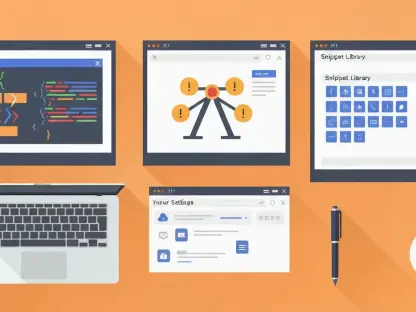In an era where information moves faster than ever, having access to reliable, real-time news data is no longer a luxury but a necessity for businesses, developers, and analysts aiming to stay competitive. News Data APIs have emerged as transformative tools, providing structured, machine-readable content that powers everything from market sentiment analysis to crisis response systems. These platforms eliminate the inefficiencies of manual data collection, offering seamless integration into applications, dashboards, and AI-driven models. With a myriad of options available, selecting the right API can significantly impact the success of a project, whether it’s for tracking global trends, building innovative apps, or informing high-stakes decisions. This exploration dives deep into seven standout News Data APIs that are shaping the landscape this year, unpacking their unique strengths, ideal use cases, and the value they bring to diverse industries. From financial giants to accessible platforms for startups, these tools are redefining how raw news transforms into actionable insights.
The Rising Importance of News Data APIs
In today’s digital ecosystem, News Data APIs have become indispensable for organizations seeking to harness the power of information in real time. These interfaces deliver structured content in formats such as JSON or XML, enabling effortless integration into various systems, including AI algorithms, analytics tools, and mobile applications. Unlike traditional methods like web scraping, which are often unreliable and time-consuming, APIs ensure consistency and accuracy, making them vital for critical decision-making processes. Their ability to aggregate vast amounts of data from diverse sources worldwide allows companies to monitor breaking news, public sentiment, or industry shifts without delay. This capability is particularly valuable in fast-moving sectors like finance, where a single headline can sway markets, or in crisis management, where timely updates can save lives. As data-driven strategies continue to dominate, the role of these APIs in bridging the gap between raw information and strategic action cannot be overstated.
Beyond their technical advantages, News Data APIs are pivotal in enabling global connectivity and localized relevance. Many platforms offer multilingual support and coverage across numerous regions, ensuring that users can access insights tailored to specific markets or demographics. This is a game-changer for businesses expanding internationally or researchers studying cross-border trends, as it provides a window into local perspectives that might otherwise be inaccessible. Additionally, the real-time nature of these tools means that organizations can react to events as they unfold, whether it’s a geopolitical shift or a sudden market disruption. The breadth of applications is staggering, spanning journalism, academic studies, and even public policy formulation. By offering a reliable pipeline of up-to-the-minute information, these APIs empower users to stay ahead of the curve, making informed choices in an increasingly complex and interconnected world. Their significance lies not just in data delivery, but in fostering agility and adaptability across industries.
Essential Features That Define Top APIs
When evaluating News Data APIs, certain characteristics emerge as non-negotiable for ensuring effectiveness and long-term value. Data enrichment stands out as a critical feature, with leading APIs providing more than just headlines by incorporating sentiment analysis, entity recognition, and topic categorization. These enhancements transform raw content into meaningful intelligence, allowing users to uncover trends, assess public opinion, or detect biases without additional processing. Such capabilities are especially crucial for applications in marketing, where understanding consumer sentiment can shape campaigns, or in financial trading, where nuanced data can predict market movements. Moreover, APIs with robust metadata and filtering options enable precise customization, ensuring that only the most relevant information reaches the end user. This level of sophistication elevates the utility of news data, turning it into a strategic asset rather than a mere commodity.
Scalability and adherence to compliance standards are equally vital considerations in selecting a News Data API. Top-tier platforms are designed to handle increasing data volumes without compromising performance, accommodating the needs of both small startups and large enterprises as they grow. This flexibility is essential in dynamic environments where demand can spike unexpectedly, such as during major global events. Equally important is compliance with legal and ethical frameworks, including data protection regulations like GDPR, which safeguard user privacy and ensure responsible data usage. Additionally, developer-friendly design plays a significant role, with intuitive documentation, RESTful endpoints, and SDKs facilitating quick integration and customization. These elements reduce onboarding time and technical barriers, enabling teams to focus on leveraging data rather than wrestling with implementation challenges. Together, these features define the benchmark for excellence in News Data APIs, ensuring they meet diverse and evolving demands.
Spotlight on Leading News Data APIs
Among the myriad of options, Webz.io distinguishes itself with an unparalleled scale, aggregating over 3.5 million articles daily from mainstream and niche sources across 170 languages and more than 200 countries. Its advanced data enrichment features, including sentiment analysis, entity extraction, and fake news detection, make it a powerhouse for organizations needing comprehensive global intelligence. Customizable feeds and detailed metadata further enhance its appeal, allowing users to filter content with precision for specific analytical needs. This API is particularly suited for large-scale operations, such as media monitoring firms or government agencies, where breadth and depth of data are paramount. Similarly, the Financial Times API targets a specialized audience with its premium business and financial content, offering real-time newswire and market reports tailored for fintech platforms and trading operations. Its enterprise-grade infrastructure ensures seamless high-frequency data integration, making it indispensable for time-sensitive financial decisions.
For those prioritizing affordability without sacrificing quality, GNews API emerges as a compelling choice, drawing from over 50,000 global sources in more than 22 languages. Its generous free plan and straightforward RESTful interface cater to startups and smaller teams looking to build news-driven applications on a budget. Meanwhile, Bloomberg API excels in financial precision, delivering real-time feeds enriched with tickers, sector tags, and sentiment analytics, ideal for high-stakes investment and regulatory monitoring. NewsCatcherAPI, on the other hand, focuses on speed and simplicity, offering clean endpoints and flexible search parameters that appeal to developers seeking agility in prototyping or experimentation. Completing the lineup, the New York Times API provides authoritative journalism and extensive archives for research and policy analysis, while The Guardian Open API supports non-commercial and academic projects with transparent access to its digital catalog. Each platform offers distinct advantages, ensuring a fit for varied objectives across the spectrum of users.
Strategic Value and Future Implications
The strategic importance of News Data APIs extends far beyond their immediate functionality, positioning them as foundational elements in the era of AI and automation. As organizations increasingly rely on machine learning for predictive modeling and competitive intelligence, the demand for high-quality, structured news data continues to surge. These APIs serve as critical inputs for training algorithms, enabling systems to anticipate market shifts, identify emerging risks, or personalize content delivery with remarkable accuracy. Their role in real-time decision-making cannot be understated, particularly in industries like finance, where split-second insights can determine profitability, or in crisis management, where immediate awareness of unfolding events can mitigate damage. By providing a steady stream of reliable data, these tools empower businesses to pivot swiftly in response to global dynamics, ensuring they remain not just reactive but proactive in their strategies. This transformative potential underscores their growing relevance across sectors.
Looking ahead, the evolution of News Data APIs is poised to further integrate with cutting-edge technologies, amplifying their impact on media intelligence and beyond. As data volumes grow and user needs diversify, scalability will remain a cornerstone, with top APIs expected to handle even larger datasets without sacrificing speed or accuracy. Innovations in data enrichment, such as deeper sentiment analytics or more nuanced topic modeling, are likely to enhance their analytical capabilities, offering users even richer insights. Additionally, the emphasis on compliance and ethical data usage will intensify, ensuring that these platforms align with global standards while maintaining trust. For organizations and developers, the key takeaway is the need to select APIs that not only meet current requirements but also offer room for future growth and adaptability. By aligning with tools that prioritize both innovation and reliability, users can position themselves at the forefront of a rapidly changing information landscape, ready to capitalize on emerging opportunities.
Harnessing the Power of News Data
Reflecting on the landscape of News Data APIs, it’s evident that these tools have redefined how information is accessed and utilized across industries. Their ability to deliver structured, real-time content with advanced features like sentiment analysis and global coverage proves instrumental in driving data-informed decisions. From Webz.io’s vast repository to Bloomberg’s financial precision, each of the seven highlighted APIs brings unique strengths to the table, catering to a spectrum of needs from academic research to high-frequency trading. Their impact is felt in the way they streamline workflows, replace cumbersome manual processes, and fuel innovations in AI and automation. As a next step, organizations should focus on testing these platforms through free tiers or demos, carefully matching features to specific goals. Prioritizing scalability, compliance, and ease of integration will ensure sustainable benefits, while staying attuned to advancements in data analytics will keep them competitive. Embracing these tools strategically can unlock new dimensions of insight, paving the way for continued success in an ever-evolving digital world.









